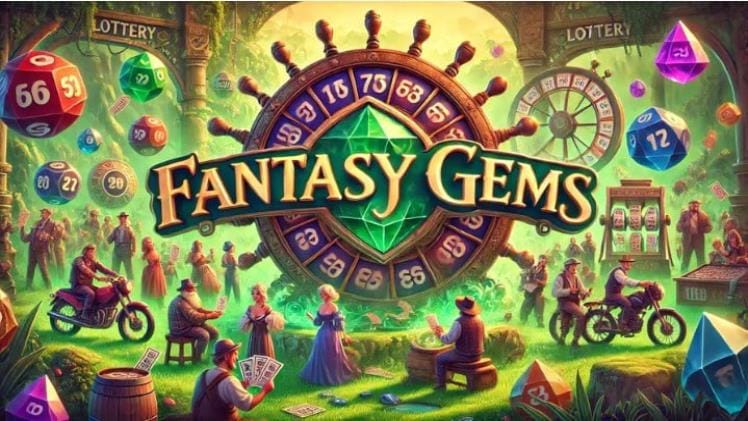Sikkim, nestled in the lap of the eastern Himalayas, is a small but vibrant Indian state known for its rich biodiversity, peaceful lifestyle, and cultural harmony. While the state is celebrated for its tourism, tea gardens, and monasteries, there’s also a lesser-known yet widely followed tradition that quietly weaves itself into daily life — the Sikkim Game.
This number-based game isn’t just about figures or results. It’s a daily habit, a mental exercise, and a part of the rhythm of life for thousands who follow it regularly. The Sikkim Game has evolved into a cultural element of the region — offering moments of anticipation, reflection, and sometimes joy — all through a simple number format.
Let’s explore the world of the Sikkim Game: how it works, why it’s popular, and how it has embraced modern technology while retaining its simplicity.
Table of Contents
What is the Sikkim Game?
At its core, the Sikkim Game is a straightforward number-based game in which participants select a number from a fixed set, usually ranging from 00 to 99. The game organizers then announce a result at certain times during the day, and people check if their selected number matches the outcome.
Unlike modern entertainment options that often involve fast-paced visuals or elaborate rules, the Sikkim Game thrives in its simplicity. It is calm, predictable, and deeply personal — you choose your number, follow the result, and engage in a mental routine that becomes part of your day.
People from different walks of life enjoy this game not for any competitive thrill, but for the satisfaction of pattern recognition, intuition, and quiet participation in a shared community activity.
How Does It Work?
The Sikkim Game operates with clarity and order. Here’s a basic outline of how it typically functions:
✅ Step 1: Number Selection
Participants choose one or more two-digit numbers from the range of 00 to 99. Some people have “lucky” numbers they play regularly; others enjoy experimenting with new combinations based on dates, memories, or even patterns observed in previous results.
✅ Step 2: Waiting for the Result
Results are declared multiple times a day, often in the morning, afternoon, and evening. These numbers are made available through community boards, local shops, or increasingly, through online platforms.
✅ Step 3: Observation and Reflection
Once the number is declared, participants check whether their chosen number was announced. Regardless of the outcome, many note the result, keep a log, or try to identify trends over time. It’s like keeping score in a personal puzzle that resets every few hours.
Why is the Sikkim Game So Popular?
Despite being incredibly simple, the Sikkim Game has a strong and loyal following. Let’s look at why it continues to attract attention:
- It’s a Daily Ritual
For many participants, following the Sikkim Game is like having a morning cup of tea or reading the newspaper. It’s woven into their daily habits and offers a moment of curiosity and focus.
- It Engages the Mind
Although it’s based on numbers, the Sikkim Game encourages observation and pattern recognition. Some people develop strategies, while others go by instinct. Either way, it becomes a form of mental exercise.
- It Builds Community
Friends, family members, and neighbors often discuss the numbers together. Conversations flow about what number came last week, what might come next, and why someone picked a certain number. This builds local connection and shared experiences.
📱 4. It’s Easily Accessible
There’s no need for equipment, investment, or large time commitments. All you need is a number and a way to check the result. It’s easy to access via mobile devices or community boards, making it approachable for people of all ages.
The Digital Shift
As mobile phones and internet connectivity reach more people across Sikkim and India, the Sikkim Game has transitioned into the digital age. While the spirit of the game remains traditional, its tools and platforms are modern.
🖥️ What’s New:
- Mobile Apps that provide real-time result updates
- Websites that archive past outcomes
- Social Media Groups where people discuss trends, predictions, and number logs
- SMS/Notifications that alert participants about result times
This combination of tradition and technology helps the game retain its nostalgic charm while staying relevant for younger generations.
Tips for Responsible Participation
Though the Sikkim Game is light-hearted and simple, it’s best enjoyed with balance and mindfulness. Here are a few tips:
- Stick to Your Routine: Enjoy the game as part of your daily rhythm, but don’t let it interfere with your responsibilities.
- Play Thoughtfully: Choosing numbers can be fun and strategic. Many enjoy logging past results and seeing how patterns change over time.
- Stay Connected, Not Obsessed: Share the experience with friends or family, but always keep perspective — it’s just a number game, not a life decision.
Cultural Roots and Legacy
The Sikkim Game has quietly existed for decades, shared across generations. For some elders, it’s a link to the past. For younger players, it’s a curious habit that helps them connect with local traditions.
What makes the game so special is that it doesn’t push or pull. It simply exists — offering small moments of anticipation, quiet excitement, and mental discipline. Over time, it becomes more than just a game — it becomes a part of the landscape.
Conclusion: The Quiet Joy of the Sikkim Game
In a world that’s often overwhelmed by fast information and constant noise, the Sikkim Game offers something rare: a peaceful, consistent, and deeply human experience. It asks little, gives a lot, and blends the past with the present in a way that feels natural.
Whether you’re a daily follower or a curious newcomer, the Sikkim Game invites you to slow down, think clearly, and find meaning in something as simple as a two-digit number.




